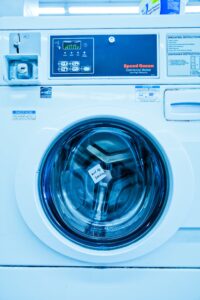Freezers play a crucial role in our daily lives, allowing us to store and preserve food for extended periods. They are a staple appliance in most households, providing convenience and ensuring that we always have access to frozen goods. However, like any other appliance, freezers require regular maintenance to function optimally. One essential aspect of freezer maintenance is defrosting. In this article, we will explore the importance of defrosting your freezer and provide a comprehensive guide on diagnosing and fixing freezer defrost problems.
Key Takeaways
- Defrosting your freezer is important to maintain its efficiency and prevent damage.
- Common signs of freezer defrost problems include frost buildup, unusual noises, and temperature fluctuations.
- Causes of freezer defrost dilemmas can range from faulty defrost timers to damaged door gaskets.
- Diagnosing freezer defrost issues involves checking the defrost thermostat, heater, and timer.
- The defrost timer plays a crucial role in regulating the defrost cycle of your freezer.
Understanding the Importance of Defrosting Your Freezer
Defrosting your freezer is essential for several reasons. Firstly, it helps maintain the energy efficiency of the appliance. Over time, frost and ice can build up on the walls and coils of the freezer, causing it to work harder to maintain the desired temperature. This increased workload leads to higher energy consumption and ultimately results in higher electricity bills. By regularly defrosting your freezer, you can remove this excess frost and ice, allowing the appliance to operate efficiently.
Secondly, defrosting your freezer is crucial for food safety. When frost builds up in the freezer, it can create an insulating layer that prevents proper airflow and temperature regulation. This can lead to fluctuations in temperature, potentially compromising the quality and safety of the food stored inside. By defrosting your freezer regularly, you can ensure that the temperature remains consistent and that your frozen food stays fresh and safe to consume.
Common Signs of Freezer Defrost Problems
There are several common signs that indicate potential defrost problems in your freezer. One of the most obvious signs is a buildup of frost or ice on the walls or shelves of the freezer. If you notice excessive frost or ice accumulation, it is a clear indication that your freezer is not defrosting properly.
Another sign of defrost problems is unusual noises coming from the freezer. If you hear loud banging or grinding sounds, it could be a sign that the defrost mechanism is not functioning correctly. Additionally, if you notice that your freezer is not maintaining a consistent temperature or if the food stored inside is not freezing properly, it may be due to defrost issues.
These signs should not be ignored, as they can indicate larger problems with the freezer. Ignoring defrost problems can lead to more significant issues, such as compressor failure or complete freezer breakdown.
Causes of Freezer Defrost Dilemmas
There are several potential causes of freezer defrost problems. One common cause is a faulty defrost timer. The defrost timer controls when the freezer enters into a defrost cycle. If the timer malfunctions, it may not initiate the defrost cycle, leading to frost buildup.
Another possible cause is a damaged or worn-out door gasket. The door gasket is the rubber seal that surrounds the freezer door and ensures a tight seal when closed. If the gasket is damaged or worn, it can allow warm air to enter the freezer, causing frost to form.
Other causes of defrost problems include a malfunctioning defrost heater or thermostat, clogged drain tubes, or a faulty defrost control board. Identifying the root cause of the problem is crucial in determining the best course of action for fixing it.
How to Diagnose Freezer Defrost Issues
Diagnosing freezer defrost issues requires a systematic approach. Here is a step-by-step guide to help you identify and diagnose the problem:
1. Check for frost buildup: Inspect the walls, shelves, and coils of your freezer for excessive frost or ice accumulation. If you notice significant buildup, it indicates a defrost problem.
2. Listen for unusual noises: Pay attention to any unusual sounds coming from your freezer. Banging or grinding noises can indicate a malfunctioning defrost mechanism.
3. Monitor temperature fluctuations: Keep an eye on the temperature inside your freezer. If it is not maintaining a consistent temperature or if the food is not freezing properly, it may be due to defrost issues.
4. Inspect the door gasket: Check the condition of the door gasket. Look for any signs of damage or wear. A damaged gasket can lead to warm air entering the freezer and causing frost buildup.
5. Test the defrost heater and thermostat: If you have access to a multimeter, you can test the defrost heater and thermostat for continuity. A lack of continuity indicates a faulty component.
By following these steps, you can narrow down the potential causes of your freezer defrost problem and determine the best course of action for fixing it.
The Role of the Defrost Timer in Your Freezer

The defrost timer is a crucial component in your freezer’s defrost system. It controls when the freezer enters into a defrost cycle, which typically occurs every 8-12 hours. During the defrost cycle, the compressor shuts off, and a heating element turns on to melt any frost or ice buildup on the evaporator coils.
If the defrost timer malfunctions, it can prevent the freezer from entering into a defrost cycle, leading to excessive frost buildup. A faulty defrost timer may need to be replaced to resolve the defrost problem.
Fixing Freezer Defrost Problems: Step-by-Step Guide
Fixing freezer defrost problems can often be done by following a few simple steps. Here is a step-by-step guide to help you fix common defrost issues:
1. Unplug the freezer: Before attempting any repairs, make sure to unplug the freezer from the power source to ensure your safety.
2. Remove all food: Take out all food items from the freezer and store them in a cooler or another freezer while you work on fixing the defrost problem.
3. Defrost the freezer: Allow the freezer to defrost naturally by leaving the door open or by using a hairdryer to speed up the process. Make sure to place towels or a tray underneath to catch any water that may drip.
4. Clean the freezer: Once the frost has melted, clean the interior of the freezer with a mixture of warm water and mild detergent. Pay special attention to the walls, shelves, and coils to remove any remaining dirt or debris.
5. Inspect and replace faulty components: Check the defrost timer, defrost heater, thermostat, and door gasket for any signs of damage or malfunction. If any of these components are faulty, they may need to be replaced.
6. Reassemble and test: Once you have replaced any faulty components, reassemble the freezer and plug it back in. Monitor its performance to ensure that the defrost problem has been resolved.
Tips for Preventing Future Freezer Defrost Dilemmas
Preventing future freezer defrost problems is essential for maintaining the longevity and efficiency of your appliance. Here are some tips to help you prevent future issues:
1. Regularly clean your freezer: Regularly clean the interior of your freezer to remove any dirt or debris that can obstruct airflow and cause frost buildup.
2. Check and replace door gaskets: Inspect the door gaskets regularly for signs of damage or wear. Replace them if necessary to ensure a tight seal.
3. Avoid overloading the freezer: Overloading your freezer can obstruct airflow and prevent proper temperature regulation. Be mindful of how much food you store in your freezer.
4. Keep the freezer away from heat sources: Placing your freezer near heat sources such as ovens or direct sunlight can cause it to work harder and lead to frost buildup. Keep it in a cool, well-ventilated area.
5. Schedule regular maintenance: Consider scheduling regular maintenance checks with a professional to ensure that your freezer is in optimal condition.
By following these tips, you can minimize the risk of future freezer defrost problems and prolong the lifespan of your appliance.
The Pros and Cons of Manual vs. Automatic Defrost Freezers
When shopping for a new freezer, you will come across two main types: manual defrost and automatic defrost freezers. Each type has its advantages and disadvantages.
Manual defrost freezers require periodic defrosting to remove frost buildup manually. The main advantage of manual defrost freezers is that they tend to be more energy-efficient since they do not have a defrost cycle that consumes additional electricity. Additionally, manual defrost freezers tend to be less expensive upfront.
However, manual defrost freezers require more maintenance and effort on the part of the user. Regular defrosting can be time-consuming and messy. If not done properly, it can also lead to damage to the freezer or food spoilage.
On the other hand, automatic defrost freezers have a built-in defrost cycle that eliminates the need for manual defrosting. This type of freezer is more convenient since it takes care of the defrosting process automatically. It also reduces the risk of food spoilage due to improper defrosting.
However, automatic defrost freezers tend to be more expensive upfront, and they consume slightly more energy due to the defrost cycle. They may also have a shorter lifespan compared to manual defrost freezers.
Ultimately, the choice between a manual or automatic defrost freezer depends on your personal preferences and priorities. Consider factors such as energy efficiency, convenience, and budget when making your decision.
When to Call a Professional for Freezer Defrost Repairs
While many freezer defrost problems can be fixed by following a step-by-step guide, there are instances when it is necessary to call a professional for repairs. Here are some situations where professional assistance may be required:
1. Complex issues: If you are unable to identify the root cause of the defrost problem or if the issue persists after attempting DIY repairs, it is best to consult a professional. They have the expertise and tools to diagnose and fix complex issues.
2. Electrical problems: If you suspect that the defrost problem is due to electrical issues, such as a faulty control board or wiring, it is crucial to seek professional help. Working with electricity can be dangerous and should be left to trained professionals.
3. Warranty coverage: If your freezer is still under warranty, it is advisable to contact the manufacturer or an authorized service center for repairs. Attempting DIY repairs may void the warranty.
4. Lack of time or expertise: If you do not have the time, patience, or expertise to fix the defrost problem yourself, it is best to hire a professional. They can quickly and efficiently resolve the issue, saving you time and effort.
Calling a professional for freezer defrost repairs ensures that the problem is addressed correctly and reduces the risk of further damage to your appliance.
Upgrading Your Freezer: Choosing a Frost-Free Model
If you are tired of dealing with manual defrosting and want to upgrade your freezer, consider investing in a frost-free model. Frost-free freezers are designed with a built-in defrost system that eliminates the need for manual defrosting.
The main advantage of frost-free freezers is convenience. They automatically defrost themselves, preventing frost buildup and eliminating the need for regular maintenance. This feature saves you time and effort, allowing you to focus on other tasks.
However, frost-free freezers tend to be more expensive upfront compared to manual defrost models. They also consume slightly more energy due to the defrost cycle. Additionally, frost-free freezers may have a shorter lifespan compared to manual defrost models.
When choosing a frost-free freezer, consider factors such as capacity, energy efficiency, and additional features. Look for models with good insulation and temperature control to ensure optimal performance.
In conclusion, defrosting your freezer is essential for maintaining its energy efficiency and ensuring food safety. Regular defrosting helps remove frost buildup and allows the appliance to operate optimally. By understanding the common signs and causes of freezer defrost problems, you can diagnose and fix issues before they escalate. Following a step-by-step guide and practicing proper freezer maintenance can help prevent future defrost dilemmas. Consider upgrading to a frost-free model for added convenience, but weigh the pros and cons before making a decision. Taking action to address freezer defrost problems will prolong the lifespan of your appliance and ensure that it continues to serve you well.
If you’re struggling with freezer defrost dilemmas, you’ll definitely want to check out this informative article on identifying and fixing common problems. But that’s not all! At 911 Appliance, we offer a range of services to keep your appliances running smoothly. From warranties to book online options, we’ve got you covered. Don’t just take our word for it, read our glowing reviews from satisfied customers. And if you want to learn more about us and our service area, we’ve got all the details on our website. Plus, don’t forget to explore our blog for more helpful tips and tricks. So why wait? Visit 911 Appliance today and say goodbye to freezer defrost dilemmas for good! (source)
What are the common signs that indicate a freezer defrost problem?
If you are worried about identifying refrigerator cooling issues, keep an eye out for signs of a freezer defrost problem. Look for excessive frost build-up, inconsistent cooling, or water pooling in the bottom of the freezer. These could all be indicators of a defrost issue that needs attention.



